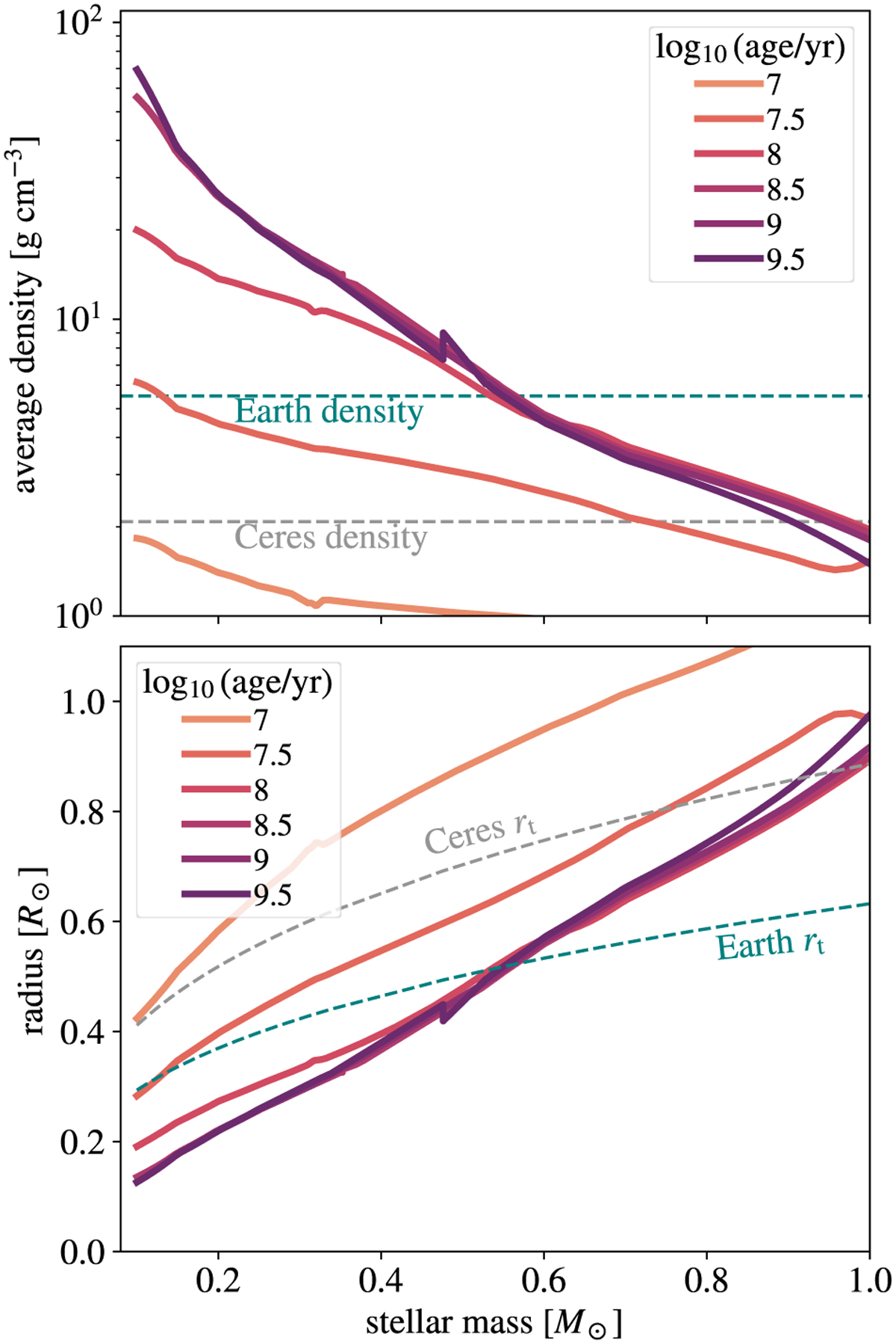Fig. 1

Download original image
Model isochrones from MIST (Choi et al. 2016) of varying ages, shown in terms of their average density (upper panel) and radius (lower panel). The upper panel compares stellar mean densities to those of Ceres and Earth. Stars denser than typical rocky bodies can disrupt these objects by tides. The lower panel compares the tidal radius, rt (Eq. (1)), to stellar radii in units of R⊙. In this case, stars more compact than rt can disrupt an object without swallowing it whole. These isochrones show that as stars cool and collapse to their main sequence radii, low-mass stars (≲0.5 M⊙) become denser than typical rocky planets and planetesimals, meaning that they can tidally disrupt these objects.
Current usage metrics show cumulative count of Article Views (full-text article views including HTML views, PDF and ePub downloads, according to the available data) and Abstracts Views on Vision4Press platform.
Data correspond to usage on the plateform after 2015. The current usage metrics is available 48-96 hours after online publication and is updated daily on week days.
Initial download of the metrics may take a while.


